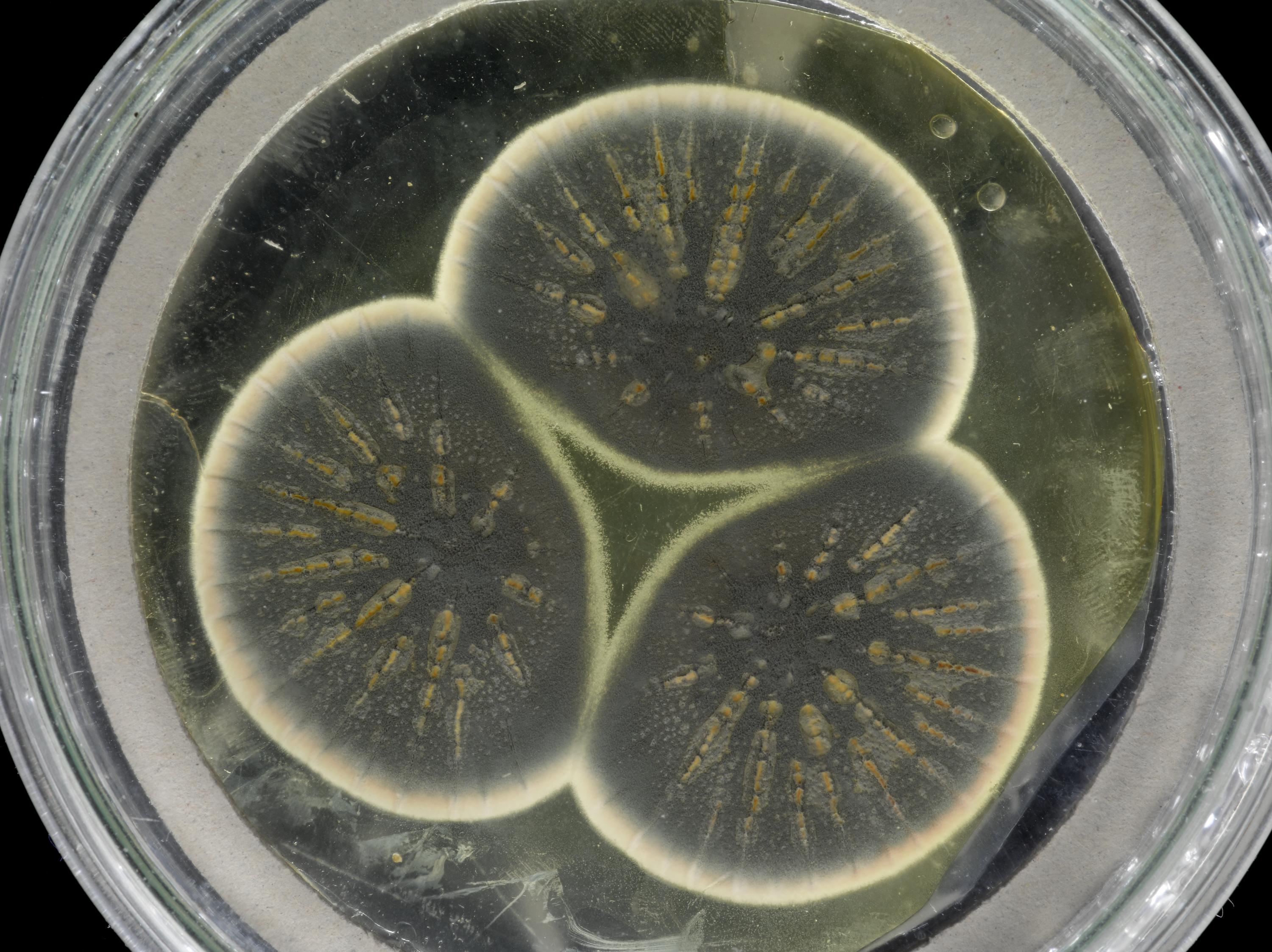In 1928 Alexander Fleming was studying influenza at St Mary’s Hospital in London and noted that a mould, growing accidentally on a bacterial culture dish, had created a bacteria-free circle, known as a zone of inhibition, around itself. He identified the fungus as a member of the genus Penicillium. This led to the discovery of the first antibiotic, penicillin.
Penicillium is a fungus that can be commonly found growing on food products such as bread or cheese. The eminent mycologist John I. Pitt observed that ‘rare indeed must be the human individual who has not encountered fungi of the genus Penicillium or have been affected by one of the many metabolites produced by them’.
Fleming himself had a difficult time identifying the exact strain of the fungus – he had thought it was Penicillium rubrum until the American mycologist Charles Thom named it P. griseoroseum. Over the years, several species of Penicillium have been identified as producing penicillin including P. griseoroseum, P. notatum and P. chrysogenum. Many of these moulds have now been re-examined by molecular methods and Fleming’s strain is now known as Penicillium rubens.
At the Centre for Agriculture and Bioscience International (CABI), we were delighted to provide a culture of Fleming’s penicillin producing Penicillium for the Superbugs: The Fight for Our Lives exhibition at the Science Museum. The culture represents one of the most important scientific discoveries of the 20th century which has improved the lives of humankind throughout the world. At CABI, we still hold an original ampoule of Fleming’s original Penicillium strain and maintain many other historic penicillin producing strains in our Genetic Resource Collection.

During the 1930s and 40s, research groups in the UK and US evaluated many different Penicillium strains to see if any could be used to mass produce penicillin. From this work, many of the historic strains have been deposited in CABI’s Genetic Resource Collection. One strain from Fleming’s investigations was transferred to the Imperial Mycological Institute, IMI (part of CABI) in 1945.
The strain Fleming originally sent to Charles Thom was transferred to CABI in 1950 and the first strain to be used to produce pure cultures of penicillin by ‘submerged culture production’ was from Belgium (NRRL 832), deposited at CABI in 1947. In fact, many modern penicillin producing cultures originate from a strain isolated from a mouldy cantaloupe from Illinois in the 1940s. This strain is also maintained at CABI, together with various other strains used for production and development in the 1940s, 50s and 60s.

Today Fleming’s strains are part of a much larger culture collection, a living ‘zoo’ of microorganisms. Our Genetic Resource Collection consists of 30,000 strains of fungi and bacteria from around the world – a reflection of CABI’s work and mission to improve lives by solving problems in agriculture and the environment. The collection is unique and rich in biodiversity, with cultures deposited from a variety of different ecosystems, including tropical forests, Antarctic lakes, aeroplane tanks and the leaves of oak trees. Collections such as ours support scientific research while providing opportunities to discover new microbial products. In addition to antibiotics, microorganisms can be used to create products that are used every day such as cholesterol lowering and immunosuppressant drugs, enzymes for industry and domestic detergents, as inoculants to improve soil and plant health, and for food and drinks.
The collection marked its 70th anniversary in 2017, and is maintained at the CABI UK scientific base in Egham, Surrey. It incorporates the UK Collection of Fungus Cultures, the National Collection of Wood Rotting Fungi and the British Antarctic Survey’s Culture Collection.
For more information see www.cabi.org or follow them on Twitter @CABI_Microbe.
Visit our free exhibition Superbugs: The Fight for Our Lives to see a real clone of Fleming’s penicillium mould, as well as other bacteria and discover the innovative technologies being used to develop new antibiotics. Open until Spring 2019.